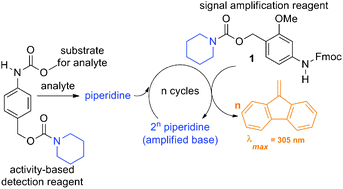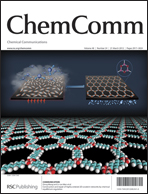Design of small molecule reagents that enable signal amplification via an autocatalytic, base-mediated cascade elimination reaction†
Abstract
This Communication describes three small molecule reagents that amplify the signal for a detection event via an autocatalytic reaction. Two signals are obtained from each reagent: (i) the dibenzofulvene


 Please wait while we load your content...
Please wait while we load your content...